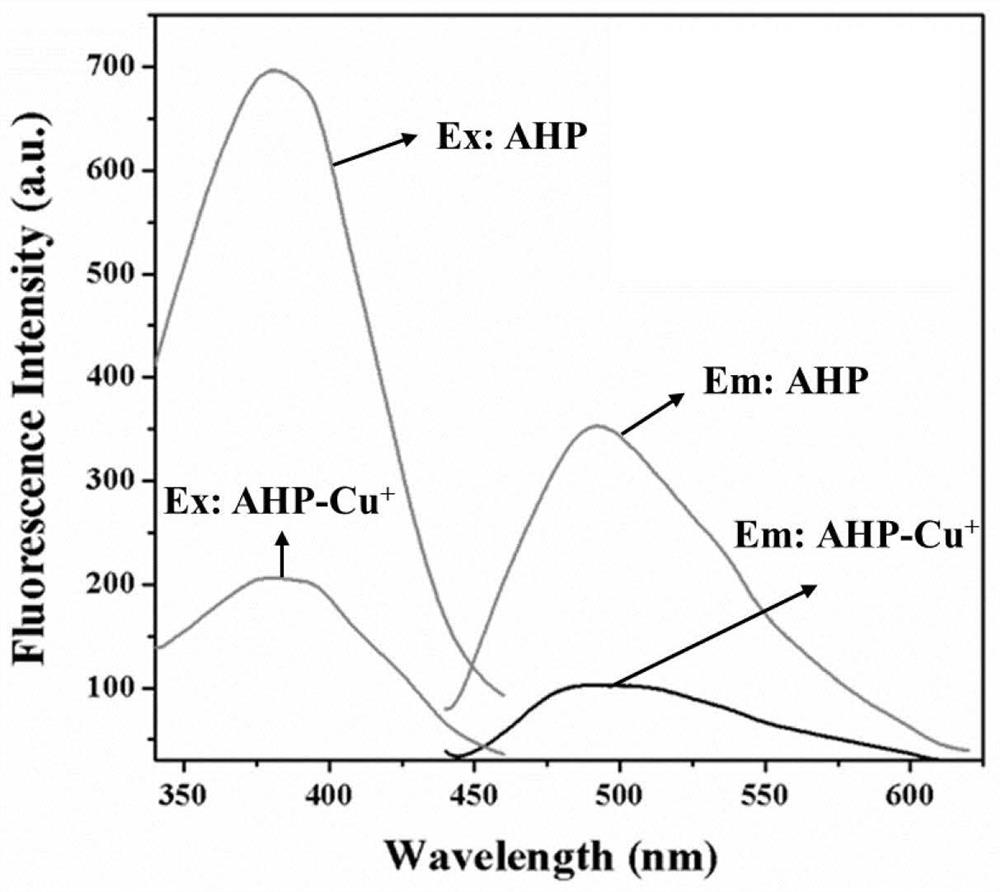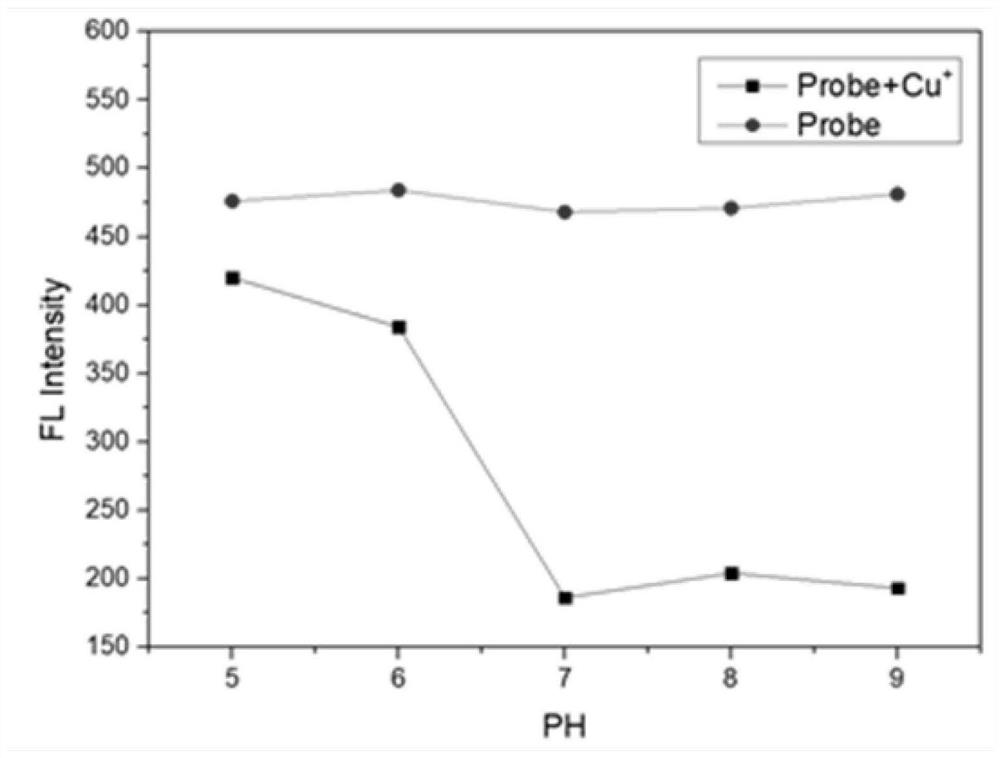A method based on complexation to detect cu + Fluorescent probes and their applications
A fluorescent probe and complexation technology, which is applied in the field of cuprous ion fluorescence analysis and detection, can solve problems such as dysfunction of the human body system, and achieve stable chemical properties, high quantum fluorescence yield, and beneficial effects on accuracy
- Summary
- Abstract
- Description
- Claims
- Application Information
AI Technical Summary
Problems solved by technology
Method used
Image
Examples
Embodiment 1
[0027] Probe preparation:
[0028] 50 μL of N-(4-methylbenzyl)-1-(pyridin-2-yl)methanamine (MDPA) and 30 μL of 25 wt% ammonia water (NH 3 ·H 2 O) Add to 2mL DCM / ethanol=1:1 mixed solvent and cool in ice bath for 30 minutes. Then add 35 μL CS dropwise 2 , after dropping, stirred at room temperature for 10 hours. A yellow solution was produced. The solution was chromatographed on a silica gel column with PET / EAC=4:1. Then vacuum dried to obtain pure product. The yield was 61.2%. Purified probe molecules were tested by high-resolution mass spectrometry and nuclear magnetic resonance: ESI-MS (m / z): 255.09 (M+H) + ;277.07(M+Na) + ; 1H NMR (CDCl3, 400MHz) δ: 8.34(d, J=7.4Hz, 9H), 7.28(m, 32H), 7.20(d, J=7.8Hz, 30H), 7.08(s, 9H), 6.85( s, 8H), 6.73 (m, 8H), 6.54 (t, J=6.8Hz, 9H), 5.49 (s, 20H). with Cu + High-resolution mass spectrometry test of the probe molecule after the reaction: ESI-MS (m / z): 339.23 (M+Na) + .
Embodiment 2
[0030] Cuprous ion solution configuration: by successively adding FeCl with the same molar mass to the probe2 and CuSO 4 solution is obtained.
[0031] With Cu + As the concentration increased, the fluorescence intensity decreased gradually, and showed a good linear relationship, with a correlation coefficient of 0.992 in the range of 0-2.8 μM. It can be used to quantify lower concentrations of Cu + . The limit of detection was 15 nM. Such as Figure 4 .
Embodiment 3
[0033] Probe selectivity and interference verification:
[0034] in Ni 2+ , Fe 3+ , Fe 2+ , Mg 2+ 、Na + 、K + , Mn 2+ 、Cd 2+ , Ca 2+ 、Ba 2+ , NH 4 + 、Cu 2+ 、Ag + , Pb 2+ To detect probe selectivity in the presence of metal ions. Adding twice the amount of other ions mixed with the probe, studied the effect of AHP on Cu + The anti-interference effect, the result is as follows Figure 5 . Even if an excessive amount of interfering metal ions is added, the fluorescence of the probe is not significantly affected. Compared with other metal ions, the probe is more sensitive to Cu + Has high selectivity.
PUM
 Login to View More
Login to View More Abstract
Description
Claims
Application Information
 Login to View More
Login to View More - R&D
- Intellectual Property
- Life Sciences
- Materials
- Tech Scout
- Unparalleled Data Quality
- Higher Quality Content
- 60% Fewer Hallucinations
Browse by: Latest US Patents, China's latest patents, Technical Efficacy Thesaurus, Application Domain, Technology Topic, Popular Technical Reports.
© 2025 PatSnap. All rights reserved.Legal|Privacy policy|Modern Slavery Act Transparency Statement|Sitemap|About US| Contact US: help@patsnap.com



